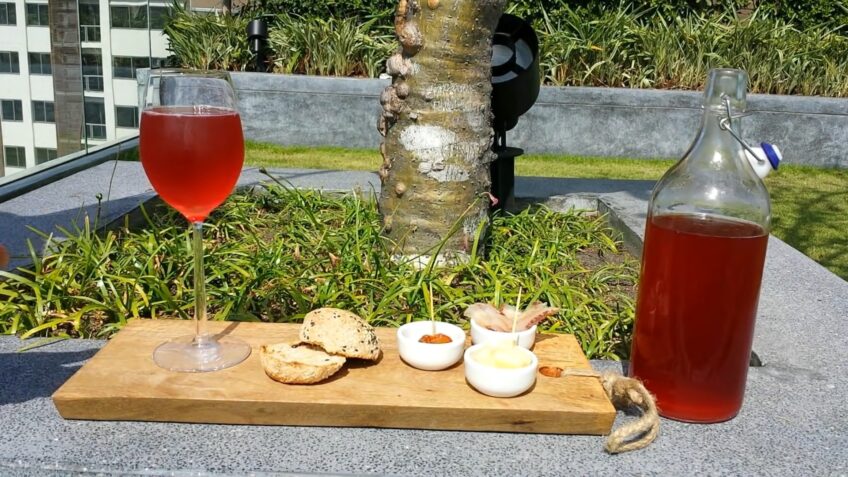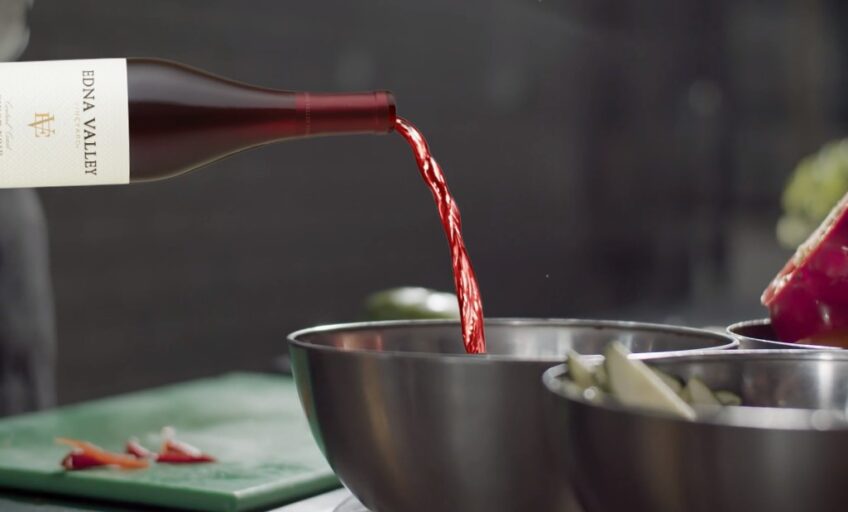Welcome to a world where romance and enchantment are bottled and presented in the form of wine. It has always been a symbol of elegance and sophistication. But there’s a unique variety that stands out from the rest – Strawberry Wine.
Associated with love, indulgence, and passion, strawberry wine captivates our senses with its delightful taste and heavenly aroma. In this blog post, we journey through the romantic alleys of strawberry wine, exploring its history, production process, flavor profile, and much more. Strap in as we embark on a captivating exploration of the world of strawberry wine!
History and Origins

Strawberry wine’s history is as sweet and intriguing as its taste. Although its exact origins remain unclear, it is believed to have emerged in Europe, particularly in regions abundant in strawberries. The Romans, who cultivated them, likely enjoyed a similar sweet treat. In America, indigenous tribes have been known to ferment berries, suggesting a long-standing tradition of strawberry wine.
As European settlers introduced winemaking techniques to the New World, they started gaining popularity. Certain cultures regard it as a symbol of love and fertility, often served at weddings and festive events. In modern times, artisan wineries and homemade wine enthusiasts have taken to producing strawberry wine, contributing to its rich history and cultural significance.
Production Process
The production of it is an art, a delicate process that involves careful selection and handling of strawberries. It begins with the harvest, where only ripe, blemish-free berries are picked. They are then crushed and left to ferment with their skins on, a process that allows the juice to extract maximum flavor and color. Yeast is added to the mix, sparking fermentation that transforms the sugar into alcohol.
This can take up to a week. The mixture is then strained, removing the pulp and skins, and transferred to a new container to age. Aging can last anywhere from a few months to a year, depending on the desired taste and aroma. The result is a vibrant, delicious wine that beautifully captures the essence of strawberries.
Flavor Profile

The primary flavor, unsurprisingly, is that of fresh strawberries. This delightful taste is often accompanied by a pleasant sweetness, making it a favorite among those who prefer fruity and sweet wines. However, it also possesses a refreshing tartness, a balance that prevents it from being overly sweet.
Secondary flavors can vary depending on the production process and the specific variety of strawberries used. Some of them carry a hint of apple or pear, others have subtle notes of citrus, while some can even exhibit a slight spiciness. This depth and complexity make strawberry wine a fascinating beverage to explore.
Aromas and Bouquet
The fragrance is as enticing as its flavor. As you pour a glass, your senses are met with the unmistakable aroma of ripe strawberries. This fragrance is often mingled with the scent of fresh flowers, creating a bouquet that is as appealing to the nose as it is to the palate. Certain ones may also exhibit additional scents such as vanilla, honey, or other red fruits, providing an aromatic complexity that beautifully complements its flavor profile. The key to enjoying it lies not just in tasting it but also in taking the time to appreciate its intoxicating aromas.
Sweetness Levels

One of the defining characteristics of strawberry wine is its sweetness. Depending on the fermentation process and the sugar content of the strawberries used, the sweetness can range from semi-sweet to very sweet. This variety allows you to choose a wine that suits your personal preferences. Sweetness greatly impacts the overall taste and perception of strawberry wine.
A very sweet wine will emphasize the fruity, dessert-like quality of the beverage, while a less sweet wine may highlight its refreshing, tangy undertones. Either way, the inherent sweetness of strawberry wine is what makes it such a charming and inviting beverage.
Pairing with Food
It is incredibly versatile when it comes to food pairing. Its sweet and fruity character makes it a perfect match for desserts, especially those featuring berries or chocolate. It’s equally enjoyable with cheese, enhancing the flavors of both the wine and the cheese. But don’t limit strawberry wine to just desserts and cheeses. Its fruity and refreshing nature pairs well with spicy dishes, as the sweetness can help counterbalance the heat. Whether you’re enjoying a spicy Asian stir-fry or a rich Indian curry, strawberry wine can provide a delightful contrast.
Serving Temperature and Glassware

Serving it at the correct temperature and in the right glassware is essential to fully appreciate its flavors and aromas. Typically, it is best served chilled, between 6-10°C (43-50°F). This temperature helps enhance the fruit’s freshness and the wine’s refreshing qualities. As for the glassware, a white wine glass is ideal. The narrower opening focuses on the aromas and delivers the wine to the right part of your tongue, enhancing your tasting experience. Remember, the pleasure of wine lies as much in the serving as in the tasting.
Popular Varieties and Regions
Like other wines, it has different varieties, each unique in its taste and aroma. Some popular varieties include the ‘Sweet Strawberry Wine,’ known for its intense strawberry flavor, and the ‘Strawberry Rhubarb Wine,’ which combines the sweetness of the berries with the tartness of rhubarb. In terms of regions, the United States, specifically Michigan, and Florida, are known for producing high-quality strawberry wine, thanks to their favorable climates for their cultivation. France and Italy, with their rich winemaking traditions, also produce exceptional strawberry wines.
Food Recipes

It isn’t just for drinking; it’s also a fantastic ingredient in cooking. In savory dishes, it can be used as a marinade for meats or in sauces to add a fruity twist. For desserts, strawberry wine can be used to macerate berries or in a reduction to drizzle over ice cream or cake. Whether you’re a culinary expert or a cooking novice, incorporating strawberry wine into your recipes can elevate your dishes to a whole new level.
Health Benefits
Apart from its delightful taste and aroma, strawberry wine also has potential health benefits. It’s rich in antioxidants, which help protect our bodies from damage by harmful molecules called free radicals. They also contain compounds that may help reduce inflammation and support heart health. However, it’s crucial to enjoy strawberry wine in moderation, as excessive consumption can lead to health issues. When consumed responsibly, strawberry wine can be a part of a balanced lifestyle.
FAQs
Can I Cook with Strawberry Wine?
Yes, it can be a delicious addition to many recipes, adding a sweet and fruity flavor to both savory and dessert dishes.
Is It Gluten-Free?
Yes, strawberry wine is gluten-free. It is made from strawberries, which are gluten-free fruit, and the yeast used in fermentation does not contain gluten.
Can I Use Strawberry Wine in Cocktails?
Absolutely! Strawberry wine can be a great addition to various cocktails, adding a unique sweetness and flavor profile. It can be mixed with sparkling water, various spirits, or even other wines to create delightful drinks.
Are There Non-Alcoholic Versions of Strawberry Wine?
While non-alcoholic strawberry wine isn’t as common, there are a number of non-alcoholic wine and fruit juice blends available that can offer a similar flavor profile.
How Many Strawberries Are Typically Used to Make a Bottle?
It can vary depending on the specific recipe and the sugar content of them, but typically, you would need about 3-4 pounds to make a gallon of wine, which would yield approximately five standard bottles.
Can People with A Strawberry Allergy Drink It?
If someone has an allergy, it would be best to avoid it as it’s made from strawberries and could trigger an allergic reaction.
How Can I Tell if It Has Gone Bad?
Similar to other wines, if your strawberry wine has a vinegar-like smell, has visible mold, or the color has significantly darkened, it may have gone bad.
Conclusion

As we wrap up our journey, it’s clear that this is not just a beverage; it’s an experience. It’s a bottle of romance, history, and celebration. The sweet, vibrant taste of strawberries, paired with intoxicating aromas and rich history, make strawberry wine a truly unique and delightful treat.
So, whether you’re a wine connoisseur or someone who’s just dipping their toes into the world of wine, don’t hesitate to give strawberry wine a try. After all, what could be more enchanting than tasting the essence of romance?

